A movie or TV show is the work of a team with a lot of effort and budget. In particular, a team of skilled artists is the most critical link.
Storyboard artists are part of that. It is the responsibility of these professionals to create visual representations of the story, and they are the right hand to organize, describe and visualize ideas into a complete plan.
The development of the media has served as a springboard to increase the demand for this profession. So, how to become a storyboard artist?
In this article, let’s analyze those issues. You will also discover more about the industry’s entry-level, job outlook, and salary positions.
What Is Storyboarding?

Screenwriter desktop with movie clapper board (link)
Storyboarding involves the process of drawing and creating a plot for a movie. You can see it has a form similar to a comic book.
The primary purpose of this concept art form is to help the creative media artists visualize the happenings and characters in the story.
For cartoons, the storyboard outlines the direction of the animation’s development so that it makes sense when splicing.
This process allows the director to plan the filming in the correct order with cinematic productions.
This process is essential for filming crews as they can plan and organize their schedules appropriately. As a result, the time for each segment is shortened.
What Is A Storyboard Artist?
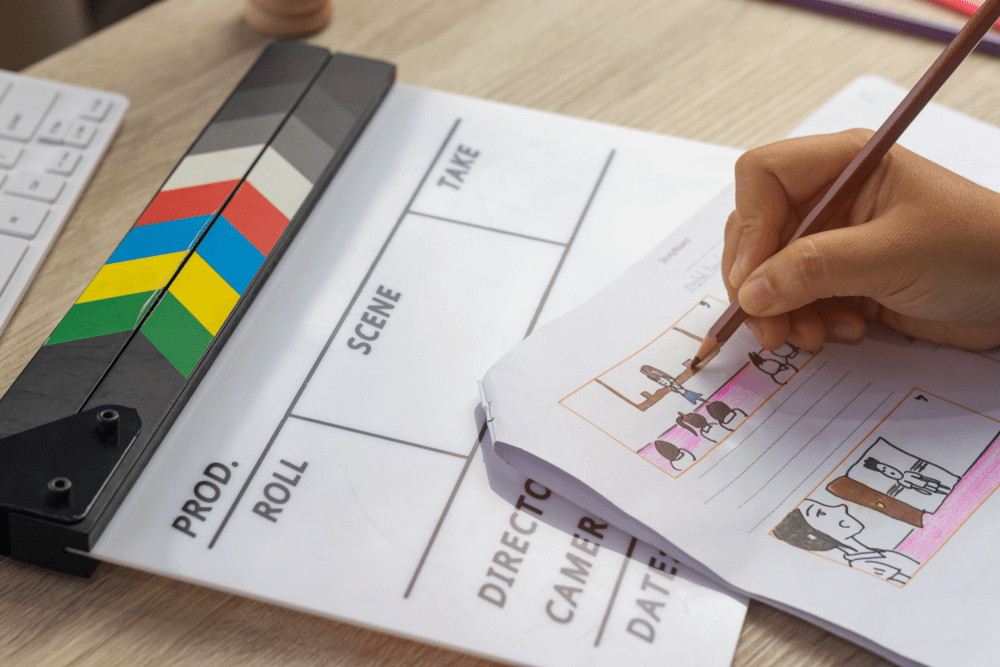
A storyboard artist is responsible for producing storyboards so that the camera crew and director get an overview of the work’s composition.
The fields of art in which they are involved are diverse, ranging from cartoons to movies.
They will create an overview and vision of the entire film before even shooting. As a result, the crew will optimize resources and time.
To be able to do this, storyboard artists need a strong imagination and creativity. They also have to grasp the director’s thoughts and directions.
In a film crew, these people will not work alone. Storyboard artists also need to work closely with producers, screenwriters, and directors.
What Does A Storyboard Artist Do?
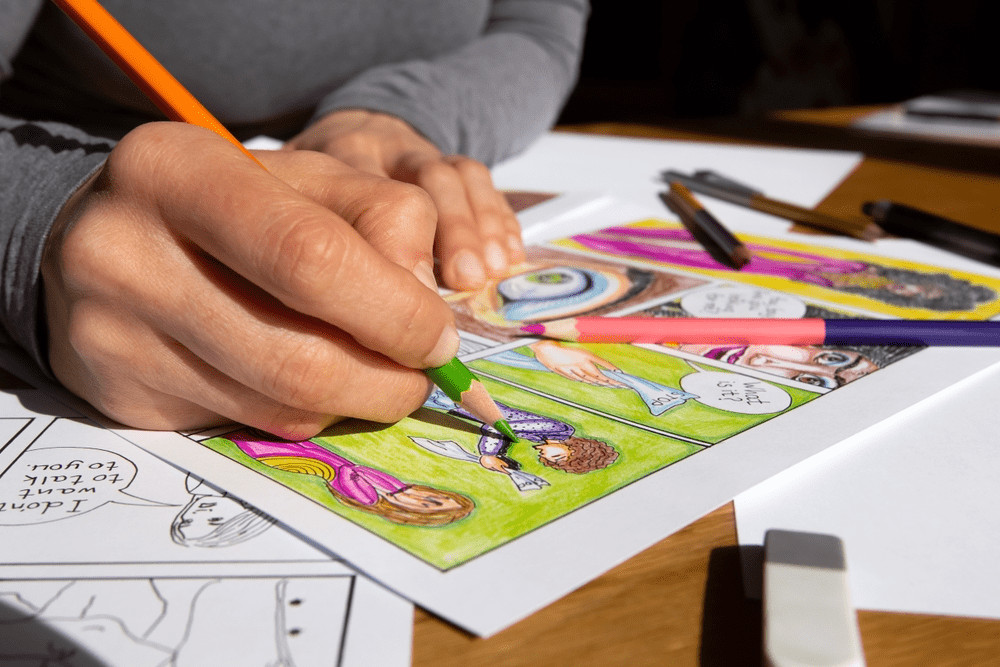
If you want to be a storyboard artist, embrace the day-to-day tasks and responsibilities.
Usually, these creative professionals will work on the project’s first phase. Their number of projects is very diverse, from TVC advertising to movies.
The task of storyboard artists is to create visualizations of the direction of the images in the form of still images. You can draw with a pencil on paper or use the software.
The experts need to work closely with the director during the work to reach a final consensus.
The storyboard is an essential guide to building a movie. Therefore, this work needs to be done carefully and meticulously.
The shortlist of tasks will include:
- Conduct research for project content.
- Sketch images on paper or computer programs.
- Work in large groups with cheerleaders and creatives.
- Retouch the scenes in the sketchpad to get the final result.
- Discuss with the client the project.
- Change scenes based on comments and feedback.
- Present and reinterpret the entire final storyboard.
How To Become a Storyboard Artist?
After learning about the concept and some job descriptions of storyboarding artists, it’s time to move on to the central part of the article.
Let’s explore the career path of this industry here.
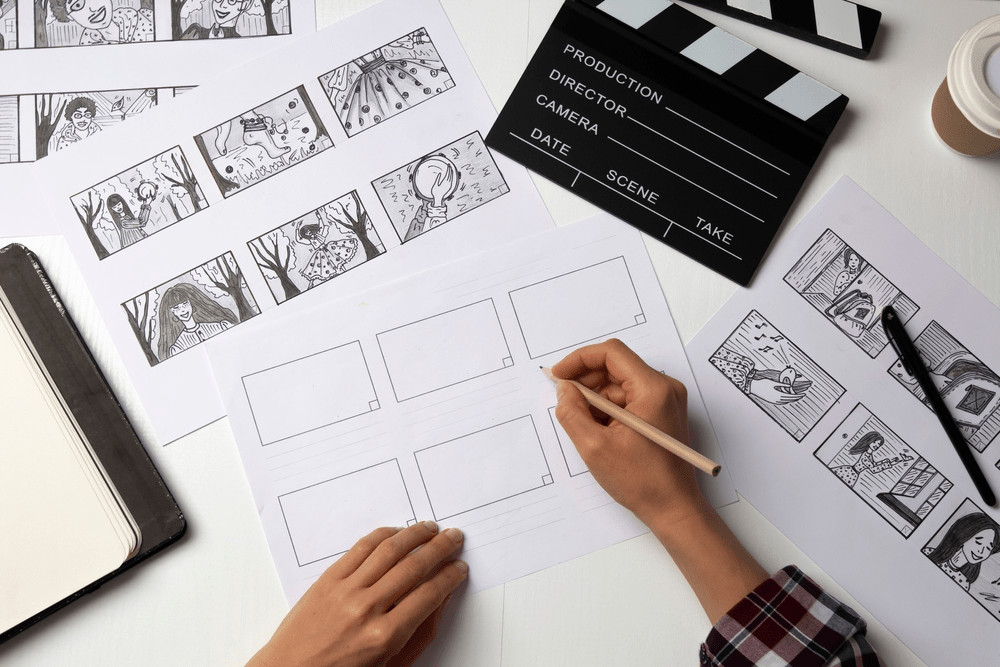
1. Storyboard Artist Degree
Employers will appreciate candidates with a bachelor’s degree. The fields on the priority list are fine arts, animation, graphic design, or a related field.
The Bachelor of Arts (B.A.) and Bachelor of Fine Arts (BFA) are programs that train you in story and story development concepts.
Besides attending and studying at traditional centers or universities, you can also find online courses.
These external courses will teach you more practical and concrete knowledge than the usual theories. So, your luggage will be much more diverse and rich.
If you need more experience and practical experience, an internship can help. It also enables you to develop your character design and storyboarding skillset.
2. Skill Development
A great storyboard artist needs to use experimentation and practice to improve their skills.
With all this experience and knowledge, their portfolio of knowledge and storytelling skills grew.
Besides technical skills such as drawing or filming, there are other benefits to actively participating in events or courses. These occasions are great opportunities to establish a good network for yourself.
Meet filmmakers and producers to question their work and expertise. It also helps you showcase your vision, knowledge, and passion for the industry.
After chatting, try to stay in touch with them by providing your professional contact details.
3. Build A Portfolio
After you have acquired the necessary skills and knowledge, it is time to find ways to promote yourself. Preparing a standard portfolio is essential.
To be able to decorate your profile, there is no better method than participating in different projects.
The joining process also allows you to get to know and collaborate with other artists. Projects suitable for preparing your portfolio include:
- Indie Films: Filmmakers won’t have too much of a budget for this genre. Therefore, they need the support of volunteers and friends to portray better and capture the scenes.
- Small-budget Ads: Local businesses and small advertisers often don’t have a lot of resources to produce TVCs. Inexperienced creatives will have many opportunities to take on these projects.
- Theater: Volunteers can also participate in local theater productions. Their primary duties are to assist in plot development, set-up, and choreography for performers.
- Independent Projects: The last option is to launch brand new projects yourself. This project allows you to express many other artistic and creative sides of yourself.
4. Advancement
After a while, many professional storyboard artists will be able to take their careers to the next level. They will be able to manage a team with many people instead of operating under others.
Some of the essential skills for anyone considering developing this path are time management, leadership, and teamwork.
Once you gain enough experience, you can even become a producer and director behind other projects.
Essential Skills
To become a true artist, you will need to master some of the following skills.
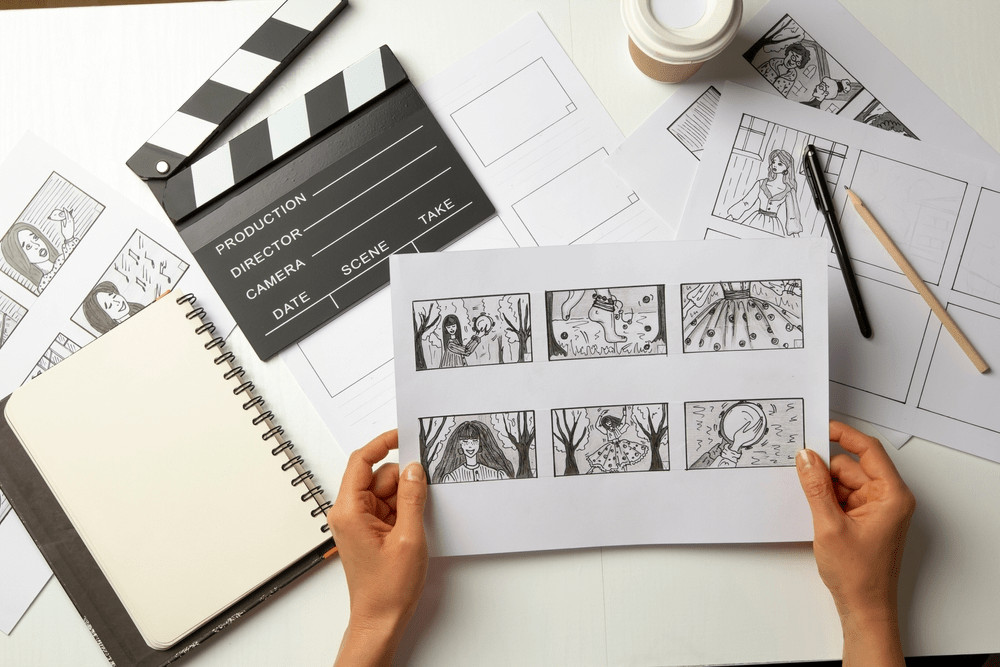
Artistic Mindset
This factor is undisputed. You need a flying and artistic soul to make this work.
This capability allows you to deliver visually pleasing images and create easy-to-understand instructional texts.
Good drawing techniques also help you create compelling characters and design impressive backgrounds.
Communication
Communication skills are crucial soft skills in any profession. You will definitely need to practice your speaking skills.
Since your job requires collaboration and teamwork with others, this skill is essential.
Artists need to constantly chat to consult, discover their needs or present their ideas effectively.
Cinematography
Besides drawing skills, you need to know how cameras work during film production. It allows you to estimate various camera angles and images most accurately.
Storytelling
Besides knowledge of cinematography, these artists also need knowledge of visual storytelling. This skill allows them to read and interpret scripts and plot visuals accordingly.
Computer Skills
You can create a storyboard entirely by hand, but the process is extremely tiring and time-consuming. Instead, take advantage of software, devices, and hardware to save effort.
To use these devices, you need to be equipped with enough knowledge and experience.
Besides creative work, storyboard artists also need to use word processors to work with contracts. They also know how to use spreadsheets to handle freelance project details.
If you’re a traditional painter, learn to use a scanner to send finished prints to clients.
Collaborative
With close cooperation between many members in a group, the atmosphere of the group should be maintained at a level of joy and harmony.
You’ll need ideas and input from others to get things done. Sometimes, disputes may arise, and you need to sit together to resolve them thoroughly.
All team members must have a spirit of solidarity and commitment for the project to end successfully.
Entry-level Positions
There are many entry-level positions that you can start when entering this industry. Let’s begin with entry-level positions in production, animation, and advertising.
You can refer to some suitable positions below to get a full-time storyboard:
- Runner: Runners often appear in creative studios to help with project management. Their job is to speed up storyboard completion by labeling and scanning work.
- Background Designers: These people collaborate with professional storyboard artists to add aesthetics to work. They will need storyboards to design compelling backgrounds with animated depth.
- Production Assistants: The role of the facilitators is to follow the senior creative staff. They will facilitate communication in the studio and manage the artist and creative director’s workload. In addition, these support people also need to perform administrative tasks.
- Illustrators: Illustrators use their drawing and creativity skills to help clients build and brand their products. As a result, they help turn their clients’ ideas into excellent and compelling visuals.
Average Salary and Outlook
Besides learning about the process of becoming a storyboard artist, you should also consider the future and compensation of the industry.
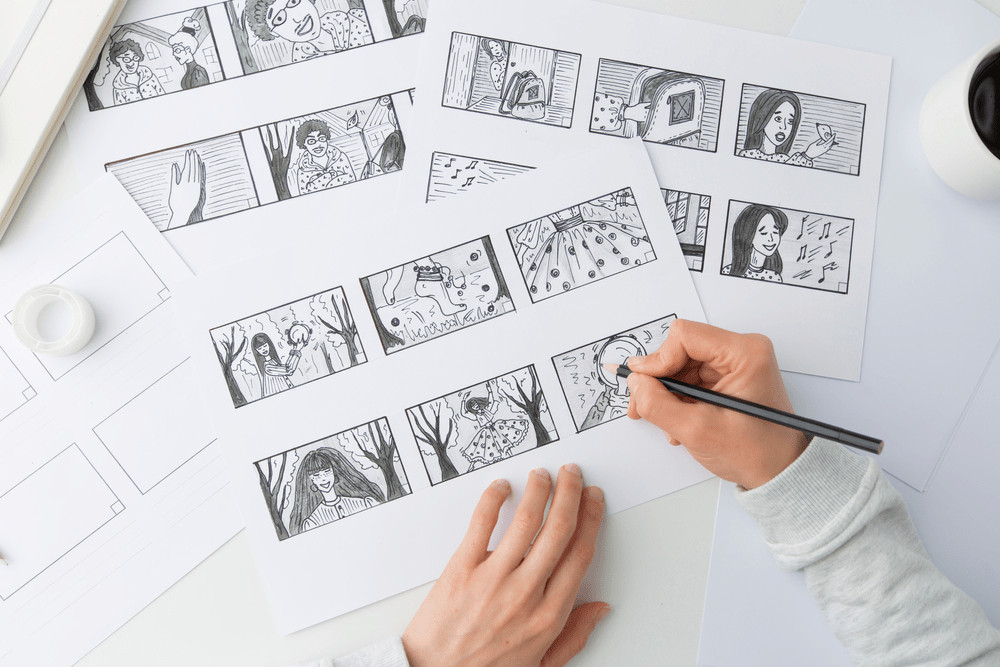
Average Salary
The median salary of animators and special effects artists is $87,445. Other notable industries include computer systems design and advertising.
In addition, craft and fine art artists have a median salary of $49,960.
Their way of getting paid can be by the hour or annually, depending on their role and type of work. If you are a studio employee, the schedule and compensation will differ from that of a freelancer.
The average hourly wage for scene artists is $37.88 per hour. You can improve your compensation and salary if you practice according to different skills.
Outlook
According to the Bureau of Labor Statistics, career demand for storyboard artists is expected to grow 16% between 2020 and 2030. It means more than 7,800 jobs will appear on the market in the future.
As a result, you will have more job opportunities when participating in this market. The increasing demand for visual effects and animation in media publications is the main reason for this ratio.
Potential Challenge
One of the most complicated challenges of the creative profession is convincing others to agree with your design.
You can’t always create perfect storyboards. So always be prepared for criticism.
Don’t be upset or judgmental. Instead, it would help if you absorbed feedback to turn it into a driving force for growth.
It is tough to convince all members to love your work at first sight. You will have to undergo rigorous review and editing sessions to reach the final result.
You will have to repeat different scenes and elements repeatedly to edit. This feeling is exceptionally dull and uncomfortable, but you need to get used to it.
Another challenge lies in the pressure of being the one to manage the input of the project. Your storyboard will probably decide if this project is approved for further work.
This responsibility is certainly weighty. However, you can do it if you have enough knowledge, determination, and passion.
Conclusion
Storyboarding is a fascinating, creative job, but it also has difficulties. You need many skills and practice to develop and become more professional.
To become a storyboard artist, you need the following four steps:
- Obtain a bachelor’s degree.
- Develop the required skill set.
- Build a portfolio.
- Make an advancement.
While the process may seem short, it will take years to complete and reach the desired skill level.
Haste certainly won’t help in this case. Instead, patience and an interest in the arts will take you to success faster.
Hopefully, these shares will help make your career path smoother and more effective. What do you think about them?
Don’t hesitate to say your thoughts in the comment section below.
Thank you for reading!
